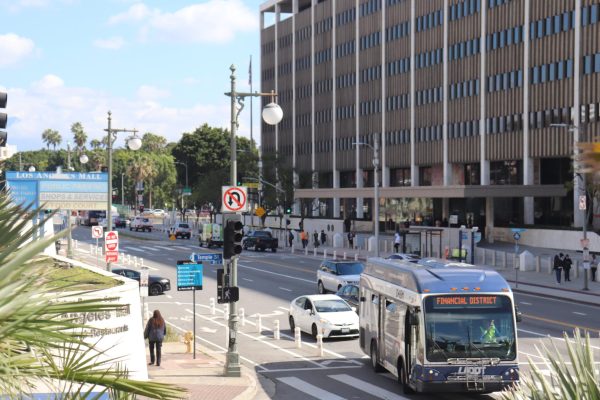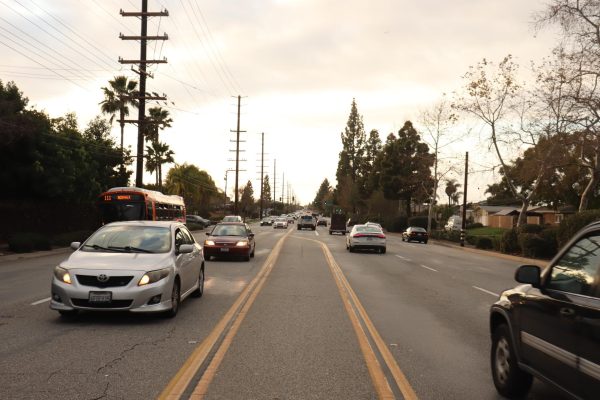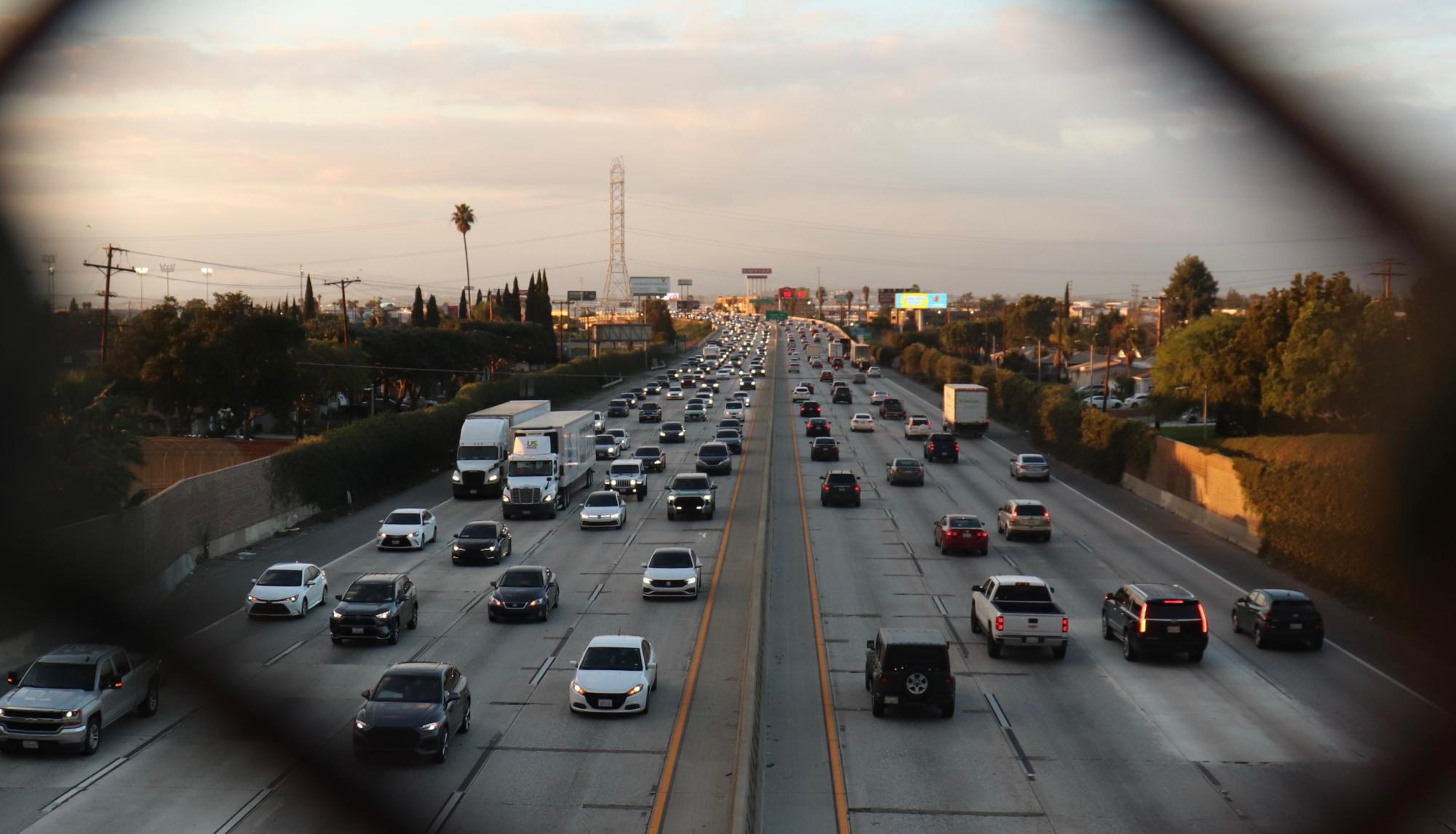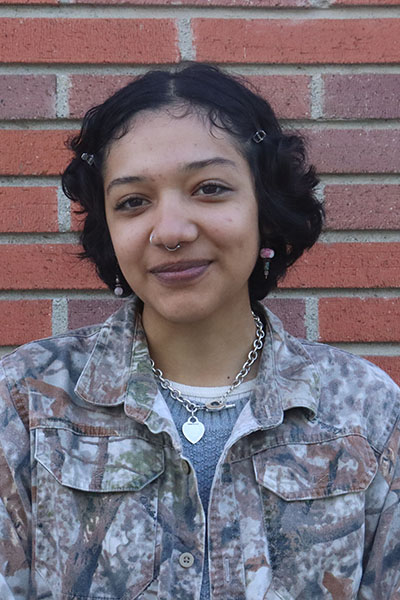Los Angeles, much like an archaeological site, unveils its history through its urban design, shaped by a myriad of historic social and economic forces.
The Los Angeles of the early 20th century was both an agency and outcome of rising population through the network of railway and streetcar systems that connected the region.
Yet following the automotive boom and the success of Pasadena’s Arroyo Seco Parkway, private and corporate interest repaved the flat region, now dominated by freeways, sparse sidewalks, limited green spaces and single use land developments.
The bones of the city lay as a successful manifestation of the 1939 World’s Fair “Futurama” exhibit, a large-scale metropolitan utopia that served as a promotional showcase for the potential of car-centric urban planning and suburban expansion.
One does not have to be in L.A. long to realize that it is innately designed for the convenience of automobiles over those of pedestrians and public transit, perpetuating chronic traffic issues throughout the region in autopian fashion. Los Angeles consequently has the highest rate of automotive deaths in the nation, with 336 fatalities recorded in 2023.
Despite such alarming statistics and numerous efforts, the city’s infrastructure remains geared towards cars, and with a population of approximately 9.8 million individuals, undoubtedly shapes the daily lives of its inhabitants.
The recently passed Measure HLA, for example, would require Los Angeles city to improve 2,500 miles of streets, with added improvements to sidewalks, crosswalks, protected bike lanes and dedicated bus lanes.
In response to the measure, Bernice Caan, a Downey resident of 30 years, shared, “I find it amazing that [L.A.] doesn’t have a better public transportation system.”

“You know, you can look at major cities throughout the world and they have great transportation systems. We really need to rethink our mode of transportation and the urban design of our cities.”
It is impossible to dismiss the abysmal grey of the region when compared to the likes of competing major American cities. Though arguably still car centric in many respects, robust public and active transportation systems offer efficient alternatives to car dependency, ergo, a number of environmental concerns.
Condensed within 4,000 square miles, an overabundance of roughly 21,800 miles of maintained roadways in L.A. County creates urban heat deserts, storing 90% solar radiation in the pavement, producing a mirage of heat above the roads and dramatizing the already warm climate of Southern California.
And while transportation remains the largest contributor of greenhouse gas emissions and air pollutants in the nation, many major cities are better able to mitigate heat deserts with adequate public green spaces.
The division of the county following freeway construction is but just one result of strict, racist zoning laws that were used as a means of justification to divide redlined cities across the country. The dehumanization and discrimination of marginalized groups prevented many of such people from purchasing homes in white neighborhoods.
Zoning laws, despite being outlawed by the 1968 Fair Housing Act, continue to sustain environmental and socioeconomic injustices through the concentration of polluting industries, hazardous waste facilities, freeways and police violence fracturing and isolating neighborhoods.
Affluent areas often benefit from protective green and blue lined zoning regulations and green space allocation, exacerbating disparities in environmental quality and public health outcomes.
Los Angeles county has a stark median of 3.3 acres of park space per 1,000 people, yet only 63% of L.A.’s population live within a 10-minute walk from these public spaces. As communities of color and lower income were widely viewed as ghettos, their access to parks was restricted and deemed unnecessary in the planning codes.
Public parks in car-centric cities are further made an odd and inaccessible rarity not only by their sparse density both in the downtowns and metropolises and surrounding suburbs, but by the consistent attached parking lot, inaccessibility to pedestrians and homogeneity of the surrounding area.

The success of parks can be accredited in part to their abundance and proximity to densely populated mixed-use areas, as outlined by author and activist Jane Jacobs in her 1961 book “The Death and Life of Great American Cities.”
Jacobs shares, “A generalized neighborhood park that is not headquarters for the leisured indigent can become populated naturally and casually only by being situated very close indeed to where active and different currents of life and function come to a focus.”
Communities and their respective public spaces become an undeniable reflection of the surrounding social climate while also garnering a comparable influence over said climates.
The separation of residential and commercial zones creates isolated and inaccessible communities, unable to properly support the essential and recreational needs of the population at large. The focus on automotive transportation has led to increased social isolation and disconnect from community, making cars essential for even the shortest of commutes.
What would otherwise be categorized as everyday interactions, instead becomes individualized commutes. The far and few pedestrians walking along the sidewalk become just fleeting images as being driven by. Encounters with local business owners, others commuting, those amongst the sidewalks can have positive impacts on a person’s socialization, especially children.
The presence of people can also be found to contribute to increased public safety, as more eyes in a particular area are better able to survey surroundings.
“A lot of crazy things happen on the train or the bus or things like that, and with that you spark a conversation, you talk to people,” shared Nicolette Barksdale, a Chicago native and Los Angeles resident of six years.
“Many people [in LA] don’t have a great idea of the benefits of public transportation compared to heavy traffic systems. Without good public transportation and everybody in their car, you don’t have that type of social setting you’d be getting with everyday strangers that you happen to commute with.”
Car dependent and sedentary lifestyles have also been found to correlate with high obesity rates in the nation. Active and alternative transportation are effective manners in meeting daily exercise requirements, though as this means of transit has been replaced with automobiles, numerous physical and mental health adversities have impacted populations across the U.S.
Varying opinions and proposed resolutions have long polarized residents of Southern California, many adamant in the belief that further widening and expanding automotive infrastructure will reduce such ailments.
Yet in spite of this, the lasting legacy of car-centric urban planning underscores the urgent need for transformative change of our cities.
In prioritizing accessible public transit, pedestrian-friendly infrastructure and green spaces, can diminish the negative impacts of rampant car culture while promoting social and communal cohesion, environmental sustainability and public health.
It is undeniable that beautiful cities populated by people attract more people. Redesigning cities in the face of continued environmental and socioeconomic turmoil becomes essential for future generations to come.












